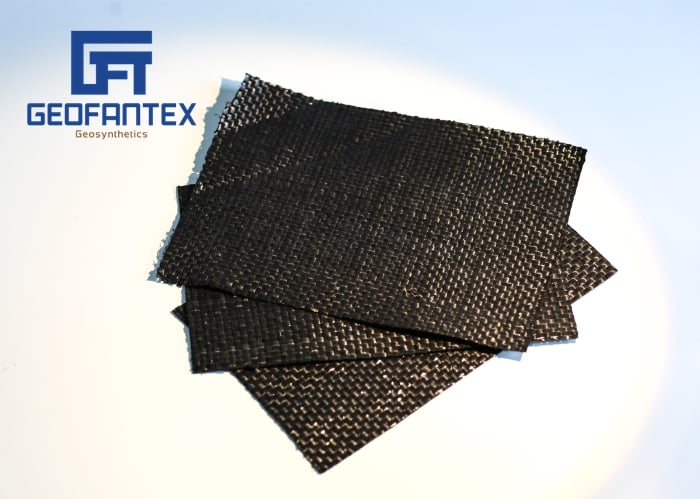+86-159 9860 6917
info@geofantex.com
geofantex@gmail.com
+86-400-8266163-44899
Geotextile Fabrics: A Comprehensive Guide
Geotextile fabrics are synthetic materials that have become increasingly popular in civil engineering projects. They are commonly used to reinforce soil, control erosion, and manage drainage in various applications. In this article, we will delve deeper into the world of geotextile fabrics, exploring the different types available and their uses in different projects.
Polypropylene Geotextile Fabrics: The Most Common Type
Polypropylene geotextile fabrics are the most widely used type of geotextile. This is due to their excellent physical and mechanical properties, including high tensile strength, good permeability, and resistance to UV rays and chemicals. They are often used for applications such as road and railway construction, embankment stabilization, and landfill lining.
Recycled Polyester Geotextile Fabrics: A Sustainable Alternative
Recycled polyester geotextile fabrics are becoming increasingly popular as a more sustainable alternative to polypropylene. These fabrics are made from recycled plastic bottles and offer similar mechanical properties to polypropylene. They are commonly used in applications such as erosion control, drainage systems, and shoreline protection.
Permeability of Geotextile Fabrics: A Key Factor in Design
The permeability of geotextile fabrics is a critical factor to consider when designing a project. The permeability of a geotextile determines its ability to allow water to flow through it. This property is crucial for applications such as drainage systems, where the geotextile needs to allow water to pass through while retaining the soil particles.
Geotextile Fabrics in Landfill Applications: A Barrier Against Contamination
Geotextile fabrics are commonly used in landfill applications to prevent the leaching of contaminants into the soil and groundwater. Impermeable geotextile fabrics are used as a barrier layer in the lining system of landfills. These fabrics are often made from polyolefins or polyesters, which are durable and resistant to chemical degradation.
Tencate Geotextile Fabrics: A Leader in Geosynthetics
Tencate is a leading manufacturer of geotextile fabrics, providing a wide range of products for various applications. Their products include woven and non-woven fabrics, as well as geogrids and erosion control mats. Tencate geotextile fabrics are widely used in applications such as road and railway construction, landfill lining, and coastal engineering.
Geotextile Fabrics in Coastal Engineering: Protecting Against Erosion
Coastal engineering is an application where geotextile fabrics play a vital role in protecting against erosion. These fabrics are used to stabilize the soil and prevent the loss of sand from the beach. They are also used in the construction of revetments and seawalls, which protect coastal areas from storm surges and wave action.
Geotextile Fabrics in Casper, Wyoming: Meeting ARDOT Specs
In Casper, Wyoming, geotextile fabrics are used in various projects that meet ARDOT specifications. These fabrics are commonly used in applications such as embankment stabilization, retaining walls, and drainage systems. They are an essential component in the design and construction of many civil engineering projects.
Geotextile Fabrics in Goose Creek, South Carolina: Available for Sale
Geotextile fabrics are readily available for sale in Goose Creek, South Carolina. These fabrics are suitable for various applications, including erosion control, drainage systems, and soil stabilization. They are available in various sizes and strengths to meet the specific needs of different projects.
ARDOT Specs for Geotextile Fabrics: Meeting the Standards
ARDOT has established specific specifications for geotextile fabrics used in civil engineering projects. These standards ensure that the geotextile fabrics used in ARDOT projects meet the required physical and mechanical properties. These specifications include the type of fabric, strength, permeability, and other factors relevant to the project’s requirements. By meeting ARDOT specifications, geotextile fabrics can provide optimal performance and longevity in various applications.
Geotextile Fabrics: A Versatile Solution for Civil Engineering Projects
In summary, geotextile fabrics are a versatile solution for a wide range of civil engineering projects. They offer many benefits, including erosion control, soil stabilization, and drainage management. Polypropylene and recycled polyester are the most commonly used types of geotextile fabrics, with impermeable fabrics made from polyolefins or polyesters used in landfill applications. Geotextile fabrics are also widely used in coastal engineering, with Tencate being a leading manufacturer in the industry. Whether meeting ARDOT specs or available for sale in locations like Goose Creek, South Carolina, geotextile fabrics are an essential component in the design and construction of many civil engineering projects.
Get Free Sample
We’ll respond as soon as possible(within 12 hours)






















